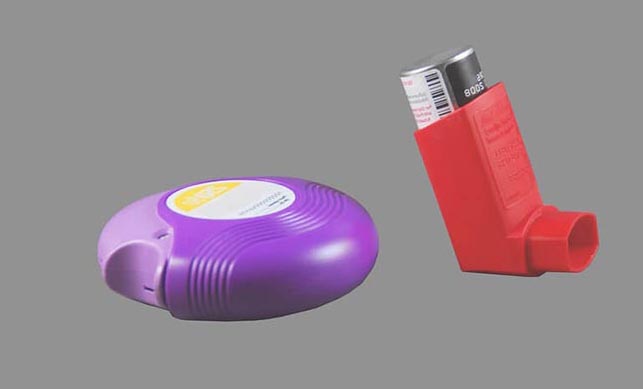
For those who suffer from the frustrating effects of asthma, or more dramatically from Chronic Obstructive Pulmonary Disease (COPD), it is essential to arm oneself with the ever-faithful ‘inhaler’. This is a huge market according to Asthma UK which reports there are approximately 5.4 million individuals who currently receive treatment for asthma in the UK alone.
How inhalers work
Though all inhaler devices function similarly, the ultimate result is always the same. Upon inhalation of breath, drugs are drawn directly into the trachea, relaxing the muscles and opening up the windpipe (bronchi) which allows more air to flow to the lungs, thus relieving the symptoms of breathlessness, tightening of the chest and wheezing associated with an asthma attack or COPD.
One would imagine that all inhaler devices are the same but this is not so. There are many different shapes and sizes and colour-coded options too. This guide to inhaler filling will give an overview of the different and varying types of inhalers.
Pressurised Metered Dose Inhaler (pMDI) / (MDI)
Most often used for the treatment of respiratory and nasal problems. This device consists of a pressurised canister (containing the medication as well as aerosol propellant), plastic casing and mouthpiece cover. The patient inhales while simultaneously pressing the propellant gas canister to release a metered dose of the medication. Coordination is required here to properly administer the full dose to the lungs. For those facing difficulties with coordination an accessory known as a ‘spacer’ can be utilised to assist with timing.
Dry Powder Inhaler (DPI)
A breath-activated inhaler which dispenses single, multi and pre-metered doses which have been accurately measured during manufacture. There are also device-metered inhalers whereby a measured dose of medication is released into a reservoir before actuation. With these devices, deeper inhalation is required as there is no propellant gas to pump the delicate particles of medication into the lungs, but no coordination is required as with the pMDI. These breath-activated inhalers make the process a little more appealing to those who have coordination problems.
Medications for Dry Powder Inhalers
Again, there are several drug options here. Short-acting bronchodilators – these drugs usually take effect within minutes of inhalation. They are known as ‘relievers’, for that is exactly what they do, alleviating the symptoms of an asthma attack or COPD episode. Some bronchodilator drugs also have the capability of reducing mucus and inflammation in the lungs.
As stated previously, inhaler devices are colour-coded. Relievers such as Salbutamol and Terbutaline which are the two main reliever drugs on the market are generally blue in colour but this is not always the case so always check with the chemist or on the packaging.
Long-acting bronchodilators, known as ‘preventers’ – drugs are utilised to control the symptoms over a longer period (they will not provide immediate relief from an attack), usually taking up to 12 hours to take effect. With continued use, even on the days, one is feeling well, the effects of the medication build-up within the body, decreasing inflammation and thus one is less likely to experience any form of attack. Depending on the brand one uses, the colour of the inhaler device will differ. Generally, products containing Beclomethasone are housed in brown or red inhalers, whereas medications containing Fluticasone are manufactured in yellow or orange housing.
According to the NHS the most common bronchodilator medications currently on the market in the UK are:
- Beta-2 agonists
- Anticholinergics
- Theophylline
Note that all these medications come with a list of side effects so be sure to consult a professional before taking any medication whatsoever.
Inhaler Filling and Powder Dosing
Precision powder dosing and the handling and packaging of these delicate pharmaceutical powders is a highly skilled and refined process. Understanding and maintaining the chemical structure of these often fragile ingredients, and ensuring integrity throughout the assembly and packaging process is essential so as not to render active ingredients ineffective. ITCM understands the importance of ‘characterising’ drug products and powders as an essential step towards defining the optimum process for handling, dosing, filling and packaging the product. Their research enables them to design inhaler-filling equipment that allows these much-needed asthma and COPD inhalers to be assembled, filled and packaged cost-effectively with precision and efficiency.
Simon Strothers is the marketing director for Molins ITCM, a packaging technologies company located in Coventry and part of the Molins Group of companies.






